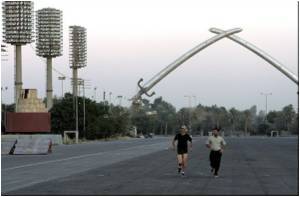Recent data reveals that regular jogging can boost the life expectancy of men by 6.2 years and women by 5.6 years.

The debate over jogging first kicked off in the 1970s when middle aged men took an interest in the past-time. "After a few men died while out on a run, various newspapers suggested that jogging might be too strenuous for ordinary middle aged people," recalled Schnohr.
The Copenhagen City Heart study, which started 1976, is a prospective cardiovascular population study of around 20,000 men and women aged between 20 to 93 years. The study, which made use of the Copenhagen Population Register, set out to increase knowledge about prevention of cardiovascular disease and stroke. Since then the study, which has resulted in publication of over 750 papers, has expanded to include other diseases such as heart failure, pulmonary diseases, allergy, epilepsy, dementia, sleep-apnea and genetics. The investigators have explored the associations for longevity with different forms of exercise and other factors.
For the jogging sub study, the mortality of 1,116 male joggers and 762 female joggers was compared to the non joggers in the main study population. All participants were asked to answer questions about the amount of time they spent jogging each week, and to rate their own perceptions of pace (defined as slow, average, and fast). "With participants having such a wide age span we felt that a subjective scale of intensity was the most appropriate approach," explained Schnohr, who is based at Bispebjerg University Hospital, Copenhagen.
The first data was collected between 1976 to 1978, the second from 1981 to 1983, the third from 1991 to 1994, and the fourth from 2001 to 2003. For the analysis participants from all the different data collections were followed using a unique personal identification number in the Danish Central Person Register. "These numbers have been key to the success of the study since they've allowed us to trace participants wherever they go," said Schnohr.
Results show that in the follow-up period involving a maximum of 35 years, 10,158 deaths were registered among the non-joggers and 122 deaths among the joggers. Analysis showed that risk of death was reduced by 44% for male joggers (age-adjusted hazard ratio 0.56) and 44% for female joggers (age-adjusted hazard ratio 0.56). Furthermore the data showed jogging produced an age adjusted survival benefit of 6.2 years in men and 5.6 years in women.
Advertisement
The ideal pace can be achieved by striving to feel a little breathless. "You should aim to feel a little breathless, but not very breathless," he advised.
Advertisement
Source-Eurekalert









